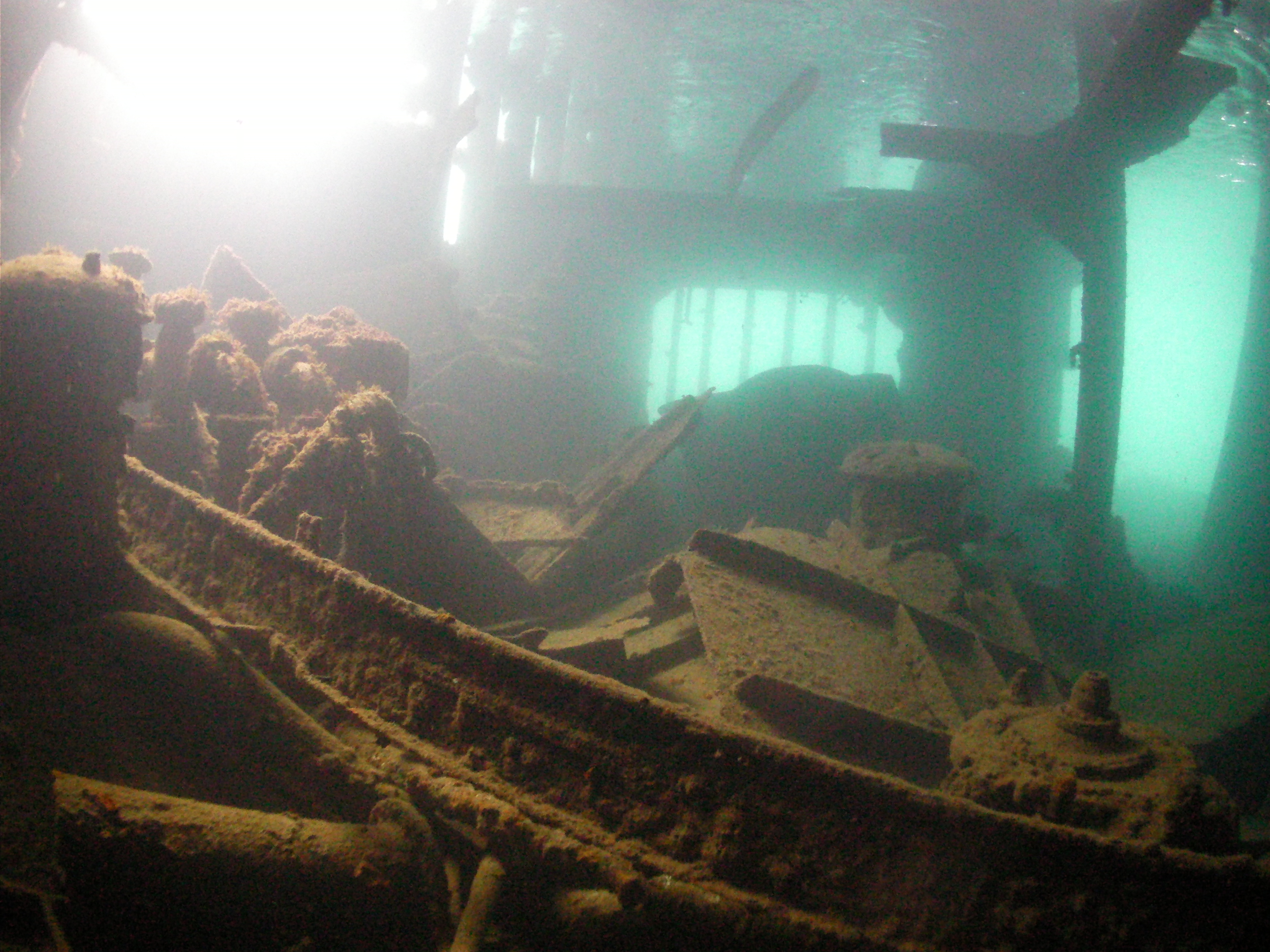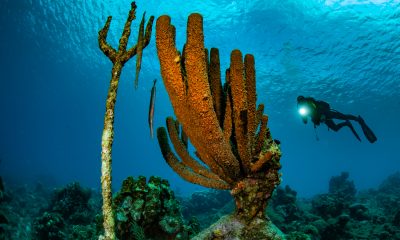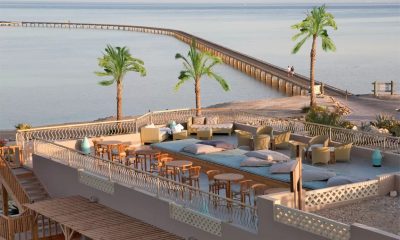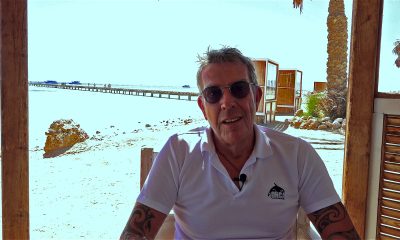News
Reefs, Wrecks and Caves: Lanzarote Dive Trip Report
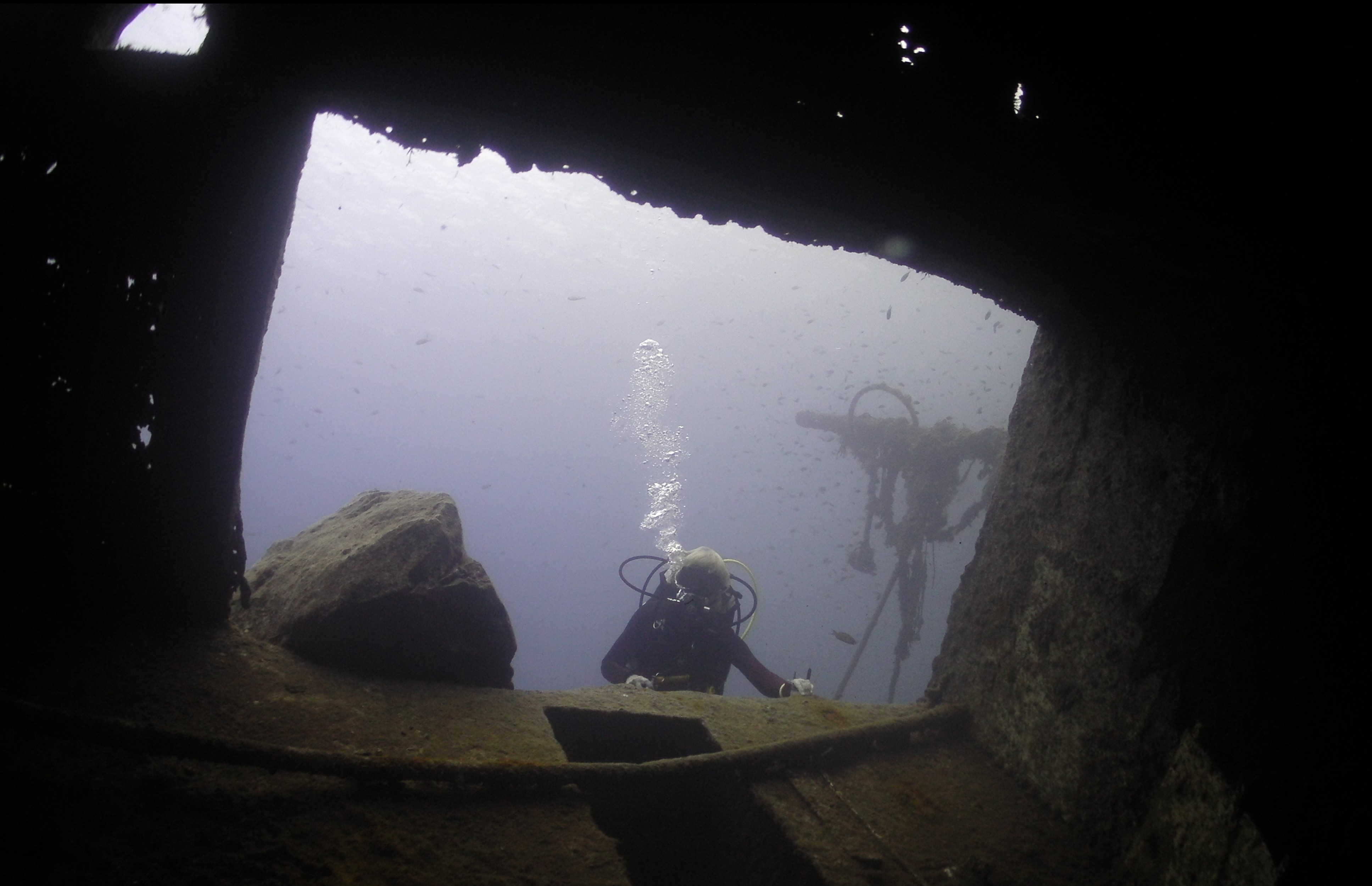
Lanzarote is somewhere visitors either love or hate; probably more for the landscape than anything else, but, along with the other Canary islands, it is coming back into fashion. Over the last three years the resorts have seen increasing numbers of tourists. Is it because of unrest elsewhere in the world, or is there something more? Mark Milburn re-visits the island.
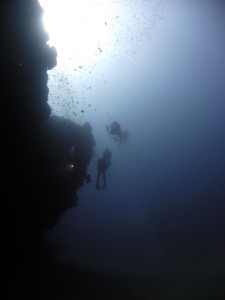 The relatively short flight of under four hours from Bristol was certainly appealing to us. The fastest ever customs check followed. We grabbed our bags and went to pick up the hire car, €45 for a day, roughly the same price as four transfers by coach. Hiring a car meant no waiting, and, no detour around every hotel in the resort. Plus, we had it for the next day. We were staying at Rubimar Aparthotel in Playa Blanca. Playa Blanca is at the south end of the island looking towards Fuertaventura, sheltered from the predominant northerly winds. We had stayed at the hotel before and found it adequate for our needs, which aren’t very great. We checked in and asked about upgrading from self catering to all inclusive, which worked out at €17.81 a day (about £15). That included three meals a day, an afternoon snack and all drinks. Even if we decided to eat out for just one meal a day, it was still cheap. The rooms are starting to look a little tired; but as we found out over our stay, the food had improved massively, so we rarely ate out. We spent the first day acclimatising; we even went to the beach for a snorkel. At the end of the day we went to the dive centre to book in for some diving.
The relatively short flight of under four hours from Bristol was certainly appealing to us. The fastest ever customs check followed. We grabbed our bags and went to pick up the hire car, €45 for a day, roughly the same price as four transfers by coach. Hiring a car meant no waiting, and, no detour around every hotel in the resort. Plus, we had it for the next day. We were staying at Rubimar Aparthotel in Playa Blanca. Playa Blanca is at the south end of the island looking towards Fuertaventura, sheltered from the predominant northerly winds. We had stayed at the hotel before and found it adequate for our needs, which aren’t very great. We checked in and asked about upgrading from self catering to all inclusive, which worked out at €17.81 a day (about £15). That included three meals a day, an afternoon snack and all drinks. Even if we decided to eat out for just one meal a day, it was still cheap. The rooms are starting to look a little tired; but as we found out over our stay, the food had improved massively, so we rarely ate out. We spent the first day acclimatising; we even went to the beach for a snorkel. At the end of the day we went to the dive centre to book in for some diving.
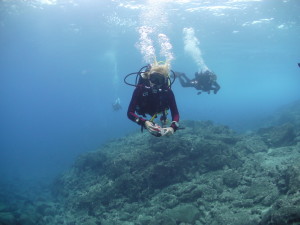 We had to arrive at the dive centre at 08:30, ready to leave on the boat at 09:00. This was fine as the breakfast was ready at 08:00 and the dive centre was only a few minutes walk from our hotel. We loaded our gear onto the boat and were taken to the Twin Pipes site, also known as Emisario. The twin pipes are waste water discharge pipes that head out south on the sand, which at some point had come apart about three hundred metres from the reef. Most dives consist of heading out on the pipes a few metres looking for rays or sharks, then back to the reef. A pleasant enough dive, visibility was around 15m with a water temperature of 24C. Maximum depth was 20m. The morning dives were just an hour apart, but, with free nitrox for suitably qualified divers, it wouldn’t restrict our dive times. The second dive that day was Flamingo Wall, a man-made stone wall protecting a small bathing beach. An easy and relatively shallow dive, teeming with life. For some reason there are schools and schools of fish here, probably more than I have ever seen on any dive anywhere before. A great start.
We had to arrive at the dive centre at 08:30, ready to leave on the boat at 09:00. This was fine as the breakfast was ready at 08:00 and the dive centre was only a few minutes walk from our hotel. We loaded our gear onto the boat and were taken to the Twin Pipes site, also known as Emisario. The twin pipes are waste water discharge pipes that head out south on the sand, which at some point had come apart about three hundred metres from the reef. Most dives consist of heading out on the pipes a few metres looking for rays or sharks, then back to the reef. A pleasant enough dive, visibility was around 15m with a water temperature of 24C. Maximum depth was 20m. The morning dives were just an hour apart, but, with free nitrox for suitably qualified divers, it wouldn’t restrict our dive times. The second dive that day was Flamingo Wall, a man-made stone wall protecting a small bathing beach. An easy and relatively shallow dive, teeming with life. For some reason there are schools and schools of fish here, probably more than I have ever seen on any dive anywhere before. A great start.
The following day we hired mountain bikes and spent the day acquainting ourselves with non-cushioned bike seats on off road trails – comfy. Everyone should try it.
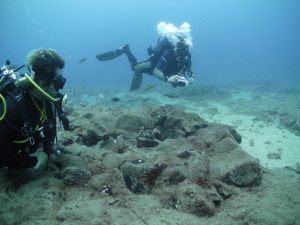 Another dive day. Due to the tidal currents and dive abilities of today’s group, the best sites were Twin Pipes and Flamingo Wall. We decided we would still go. The centre’s owner was happy for us to do our own thing at the sites, as we had dived them before a couple of days beforehand. We wanted to go out to the break in the pipes, as there was loads of life there on our previous visit to Lanzarote. It wasn’t one of the centre’s normal sites though, so they didn’t have any coordinates. We told them to drop us about 150m south of the normal site and we would find our way. We jumped in and looked down as we descended. We could see the seabed from the surface some 20m below us, but we couldn’t see the pipes. There was a slow current running, so we decided it must have moved us across a little. When the pipes eventually came into view, we headed further south. After a ten minute swim, spotting five Angel Sharks and two Eagle Rays on the way, we were at the break in the pipes. Huge schools of barracuda circled the fish below, which were swirling around in a feeding frenzy. It’s an impressive sight; just stay out of the yellowish discharging water. We stayed watching
Another dive day. Due to the tidal currents and dive abilities of today’s group, the best sites were Twin Pipes and Flamingo Wall. We decided we would still go. The centre’s owner was happy for us to do our own thing at the sites, as we had dived them before a couple of days beforehand. We wanted to go out to the break in the pipes, as there was loads of life there on our previous visit to Lanzarote. It wasn’t one of the centre’s normal sites though, so they didn’t have any coordinates. We told them to drop us about 150m south of the normal site and we would find our way. We jumped in and looked down as we descended. We could see the seabed from the surface some 20m below us, but we couldn’t see the pipes. There was a slow current running, so we decided it must have moved us across a little. When the pipes eventually came into view, we headed further south. After a ten minute swim, spotting five Angel Sharks and two Eagle Rays on the way, we were at the break in the pipes. Huge schools of barracuda circled the fish below, which were swirling around in a feeding frenzy. It’s an impressive sight; just stay out of the yellowish discharging water. We stayed watching 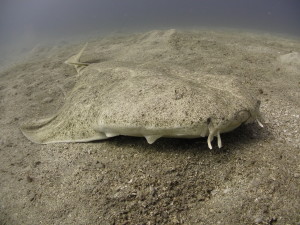 for a while but we knew we had a long swim in front of us if we were going to try and find the anchored boat. We did have a delayed surface marker buoy, should we need it. The return swim was assisted by a small current, which sent us back along the pipes, past the same (or maybe different) Angel Sharks. We reached the reef in just under ten minutes; that current was stronger than we thought. If the boat was anchored in the same place as the previous dive there, we should be able find it, and luckily it was.
for a while but we knew we had a long swim in front of us if we were going to try and find the anchored boat. We did have a delayed surface marker buoy, should we need it. The return swim was assisted by a small current, which sent us back along the pipes, past the same (or maybe different) Angel Sharks. We reached the reef in just under ten minutes; that current was stronger than we thought. If the boat was anchored in the same place as the previous dive there, we should be able find it, and luckily it was.
The next day, for a change, my other half decided to book us on a mountain trek around one of the volcanic peaks. It was quite interesting with some amazing views. It was followed by a long sea swim (I think she is trying to wear me out).
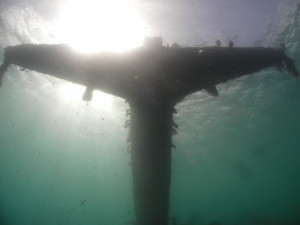 On our third dive day, we arrived at the shop to be met by Sergio. He had been our dive guide on previous visits to Lanzarote and had heard we were back. He no longer worked at the centre as he was chasing a new career, something that could earn money (I can understand that!). He decided he would join us for a dive. He ended up leading the dive around the reef near the lighthouse, il faro de Pechiguera. The area is not known for an abundance of life, but they do get some big fish visit there on occasion. Down we went. Schools of hunting tuna swam overhead, whilst smaller reef fish darted in and out of safety. Barracuda hung mid water, watching. There wasn’t as much life as at the other sites we had visited, especially if you only looked forward and down (you had to look up too). We then came across an area which looked like a field of pink balls; these were balls of Maerl, a calcified seaweed, commonly called Rhodoliths. We also saw a very large scorpion fish, camouflaged in pink. It was nice to dive somewhere different.
On our third dive day, we arrived at the shop to be met by Sergio. He had been our dive guide on previous visits to Lanzarote and had heard we were back. He no longer worked at the centre as he was chasing a new career, something that could earn money (I can understand that!). He decided he would join us for a dive. He ended up leading the dive around the reef near the lighthouse, il faro de Pechiguera. The area is not known for an abundance of life, but they do get some big fish visit there on occasion. Down we went. Schools of hunting tuna swam overhead, whilst smaller reef fish darted in and out of safety. Barracuda hung mid water, watching. There wasn’t as much life as at the other sites we had visited, especially if you only looked forward and down (you had to look up too). We then came across an area which looked like a field of pink balls; these were balls of Maerl, a calcified seaweed, commonly called Rhodoliths. We also saw a very large scorpion fish, camouflaged in pink. It was nice to dive somewhere different.
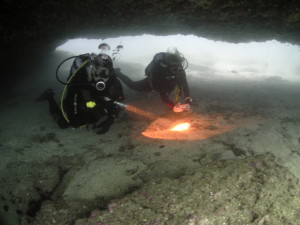 The second dive of the day was going to start at the wreck and cave, then drifting around Punta Berrugo. Sergio was coming for another dive. We were dropped onto the wreck, a very flattened wooden boat, from there we then swam to the cave. The cave is small and not too exciting, but we were escorted by a lot of fish and a small Eagle Ray. We continued with the slow drift eventually finding less and less fish. We then came across a large fishing cage. Like a crab pot but designed to catch anything, its rope had broken and it was full of fish; this was ‘Ghost Fishing’ in the extreme. It wasn’t long before a few of us tried to open the 1.5m diameter wire cage. Between us, we managed to make a couple of holes and by the time we left it, most fish had escaped. The timing wasn’t perfect, as most of us were getting low on air and close to the end of our no stop time; we had done enough though. At least that area will have some more fish for the next group.
The second dive of the day was going to start at the wreck and cave, then drifting around Punta Berrugo. Sergio was coming for another dive. We were dropped onto the wreck, a very flattened wooden boat, from there we then swam to the cave. The cave is small and not too exciting, but we were escorted by a lot of fish and a small Eagle Ray. We continued with the slow drift eventually finding less and less fish. We then came across a large fishing cage. Like a crab pot but designed to catch anything, its rope had broken and it was full of fish; this was ‘Ghost Fishing’ in the extreme. It wasn’t long before a few of us tried to open the 1.5m diameter wire cage. Between us, we managed to make a couple of holes and by the time we left it, most fish had escaped. The timing wasn’t perfect, as most of us were getting low on air and close to the end of our no stop time; we had done enough though. At least that area will have some more fish for the next group.
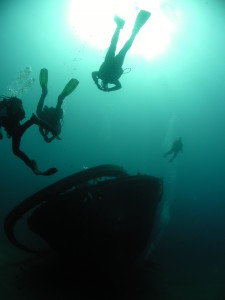 A group of friends had told us about the Temple Hall wreck, the Telamon, a shore dive near Arrecife. We asked the dive centre if we could go there; Sergio said would take us even though he had never dived it himself. Just the two of us met Sergio at the shop at 9:00 and loaded the van. Thirty minutes later we were on a tiny beach, near the remains of the beached ship. The entry was very easy, a gentle stony slope with sandy patches. We did a surface swim to the wreck, which lies stern to shore, and descended next to it, in about 1.5m of water. We headed towards mid ships, where the visible part of the ship ended. The engine room area was open at the break in the ship. We swam around the engine room in a maximum depth of around 3.5m. It was very interesting; it was also dark. Light came through holes around the wreck, creating some interesting light for photographers. From the shore you could just see a piece of wreck sticking out of the water thirty to forty metres in front of the break; we had heard there was more wreckage out there, so swam in that direction. We soon came across the bow, lying on its port side, pointing towards the midships/stern section. The bow itself was quite intact but it was quite broken away behind that. One of the ship’s masts nearly broke the surface from the seabed at around 6m. This section had quite an abundance of life; several schools of fish swam around the wreck’s remains. Almost at the bow there was an opened hatch which went down through three decks, with some great ambient light around the inside. Altogether this was a very nice dive, lots of light because of the maximum depth of 8.4m and a lot of life. I would say a must for photographers that are after well lit wreck shots, with some nice light breaking through.
A group of friends had told us about the Temple Hall wreck, the Telamon, a shore dive near Arrecife. We asked the dive centre if we could go there; Sergio said would take us even though he had never dived it himself. Just the two of us met Sergio at the shop at 9:00 and loaded the van. Thirty minutes later we were on a tiny beach, near the remains of the beached ship. The entry was very easy, a gentle stony slope with sandy patches. We did a surface swim to the wreck, which lies stern to shore, and descended next to it, in about 1.5m of water. We headed towards mid ships, where the visible part of the ship ended. The engine room area was open at the break in the ship. We swam around the engine room in a maximum depth of around 3.5m. It was very interesting; it was also dark. Light came through holes around the wreck, creating some interesting light for photographers. From the shore you could just see a piece of wreck sticking out of the water thirty to forty metres in front of the break; we had heard there was more wreckage out there, so swam in that direction. We soon came across the bow, lying on its port side, pointing towards the midships/stern section. The bow itself was quite intact but it was quite broken away behind that. One of the ship’s masts nearly broke the surface from the seabed at around 6m. This section had quite an abundance of life; several schools of fish swam around the wreck’s remains. Almost at the bow there was an opened hatch which went down through three decks, with some great ambient light around the inside. Altogether this was a very nice dive, lots of light because of the maximum depth of 8.4m and a lot of life. I would say a must for photographers that are after well lit wreck shots, with some nice light breaking through.
Another cycling day, mountain biking around a volcano, then across to the other side of the island. This was nearly the end of me; I had to have some rest, otherwise I wouldn’t make our last diving day.
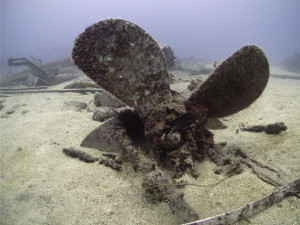 For our last day of diving, we decided we wanted to dive the old harbour wrecks at Puerto del Carmen. These had been deliberately sunk years ago, nice and close so that divers could visit. When someone had decided to extend the harbour, the newly built harbour wall ended up partially covering one of the wrecks. We met at the dive centre at the normal time of 08:30. We put our kit together and loaded the van, which then took us to Puerto del Carmen. The centre operates two dive RIBs, one from Playa Blanca and one from Puerto del Carmen, which made life easy for diving two separate locations. The one minute boat ride went really quickly. We jumped in on the biggest wreck, the one part buried under the harbour wall. Altogether there are about five wrecks there, however some are well broken and don’t look very ship-shape anymore. After visiting all the wrecks, reaching a maximum depth of 37m, we visited a small cave, then returned back to the shallowest wreck. We looked around and checked everyone’s air before going back the the boat, which was now tied to the harbour wall. We went back to the harbour, changed our cylinders and had a little break. Then off to our next site, the orange coral. One of the things about the Canary Islands is there is very little in the way of corals or seaweed, so a whole dive is centred around one piece of coral. It’s not quite that bad, it is just a name for the route you take.
For our last day of diving, we decided we wanted to dive the old harbour wrecks at Puerto del Carmen. These had been deliberately sunk years ago, nice and close so that divers could visit. When someone had decided to extend the harbour, the newly built harbour wall ended up partially covering one of the wrecks. We met at the dive centre at the normal time of 08:30. We put our kit together and loaded the van, which then took us to Puerto del Carmen. The centre operates two dive RIBs, one from Playa Blanca and one from Puerto del Carmen, which made life easy for diving two separate locations. The one minute boat ride went really quickly. We jumped in on the biggest wreck, the one part buried under the harbour wall. Altogether there are about five wrecks there, however some are well broken and don’t look very ship-shape anymore. After visiting all the wrecks, reaching a maximum depth of 37m, we visited a small cave, then returned back to the shallowest wreck. We looked around and checked everyone’s air before going back the the boat, which was now tied to the harbour wall. We went back to the harbour, changed our cylinders and had a little break. Then off to our next site, the orange coral. One of the things about the Canary Islands is there is very little in the way of corals or seaweed, so a whole dive is centred around one piece of coral. It’s not quite that bad, it is just a name for the route you take. 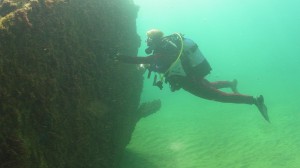 Puerto del Carmen has lots of sites and routes – the orange coral would include a small wreck, the orange coral, a seahorse and a cave. That is exactly what we saw, although we did hope for two seahorses. Another very nice dive, even if it did get a bit busy with divers towards the end. That was our last dive of our holiday. Once our kit was hung out to dry, we returned to our hotel.
Puerto del Carmen has lots of sites and routes – the orange coral would include a small wreck, the orange coral, a seahorse and a cave. That is exactly what we saw, although we did hope for two seahorses. Another very nice dive, even if it did get a bit busy with divers towards the end. That was our last dive of our holiday. Once our kit was hung out to dry, we returned to our hotel.
The last day of our holiday was a rest day, and I needed it. The diving hadn’t been tiring; it was what we did between the diving that tired me out. The weather was almost perfect; we did have a short rain shower on one day and a few night time ones too. The sun had shone and the visibility had, on the whole, been good.
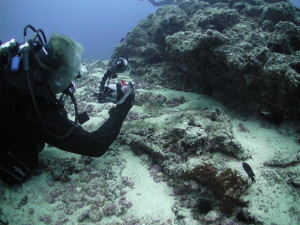 So, had anything changed over the last three years? In reality, no. The diving has always been good; I’d compare it with places like Malta or Mediterranean Spain, but with more life. There is only about three degrees of latitude – less than two hundred miles – between the likes of Egypt and Lanzarote. That makes hardly any difference in temperature during the winter months, with the summer temperatures being a little cooler and more bearable. I spoke to various people around the island, who all seemed to think the increase in tourism was due to perceived troubles elsewhere in the world. That, combined with the great value for money Lanzarote seems to offer, makes the Canary Islands a great option for divers.
So, had anything changed over the last three years? In reality, no. The diving has always been good; I’d compare it with places like Malta or Mediterranean Spain, but with more life. There is only about three degrees of latitude – less than two hundred miles – between the likes of Egypt and Lanzarote. That makes hardly any difference in temperature during the winter months, with the summer temperatures being a little cooler and more bearable. I spoke to various people around the island, who all seemed to think the increase in tourism was due to perceived troubles elsewhere in the world. That, combined with the great value for money Lanzarote seems to offer, makes the Canary Islands a great option for divers.
Blogs
Jeremy Higson from Sea to Sky talks to Jeff Goodman about diving in Oman (Watch Video)
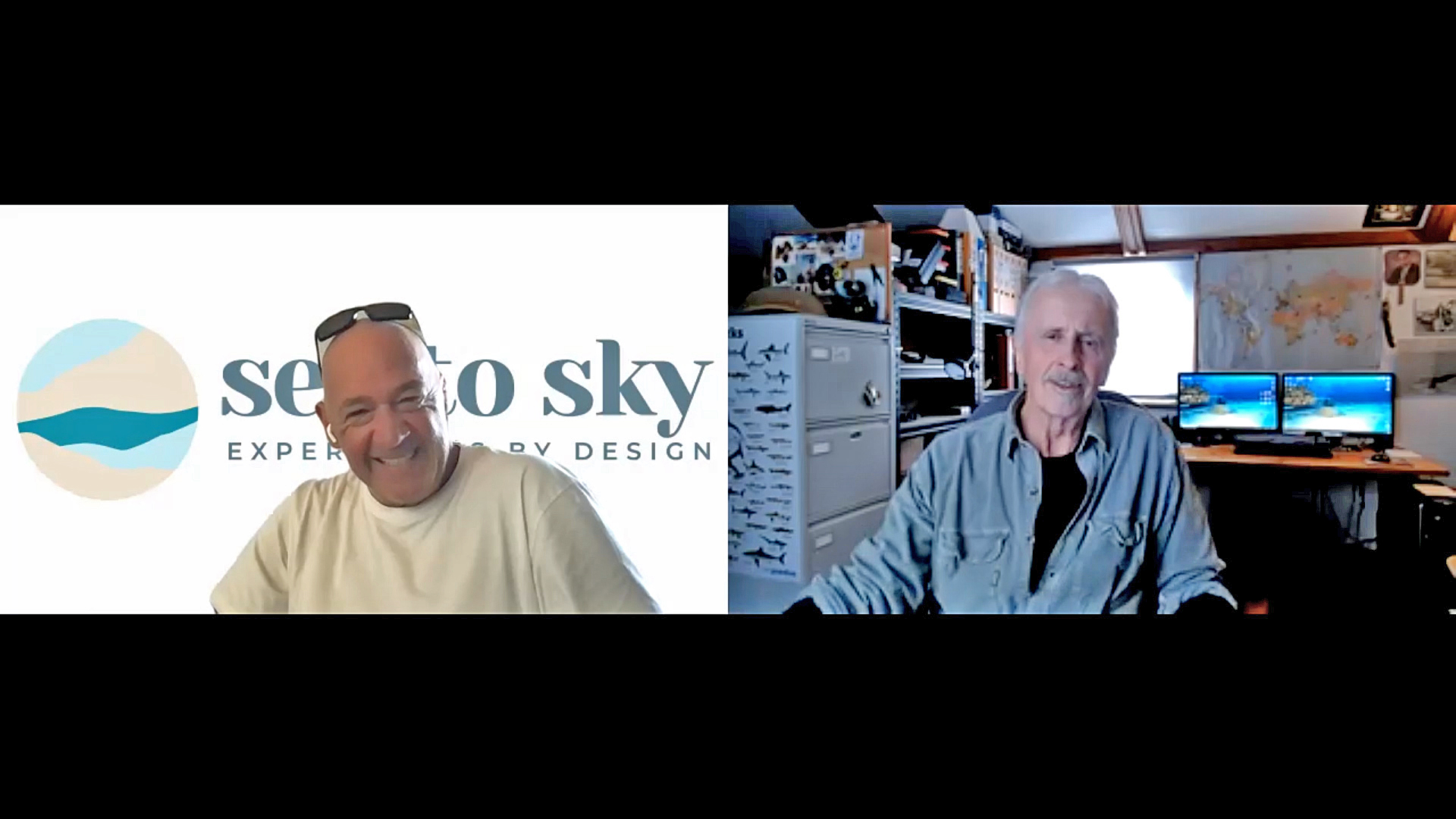
In an interview recorded exclusively for Scubaverse.com, Jeff Goodman interviews Jeremy Higson from Sea to Sky about the itineraries the tour operator offers in Oman.
For more information about diving in Oman, contact Sea to Sky now:
Email: hello@mysetaosky.co.uk
WhatsApp: + 39 379 236 7138
Website: www.myseatosky.co.uk
Gear News
May the 4th be with you!
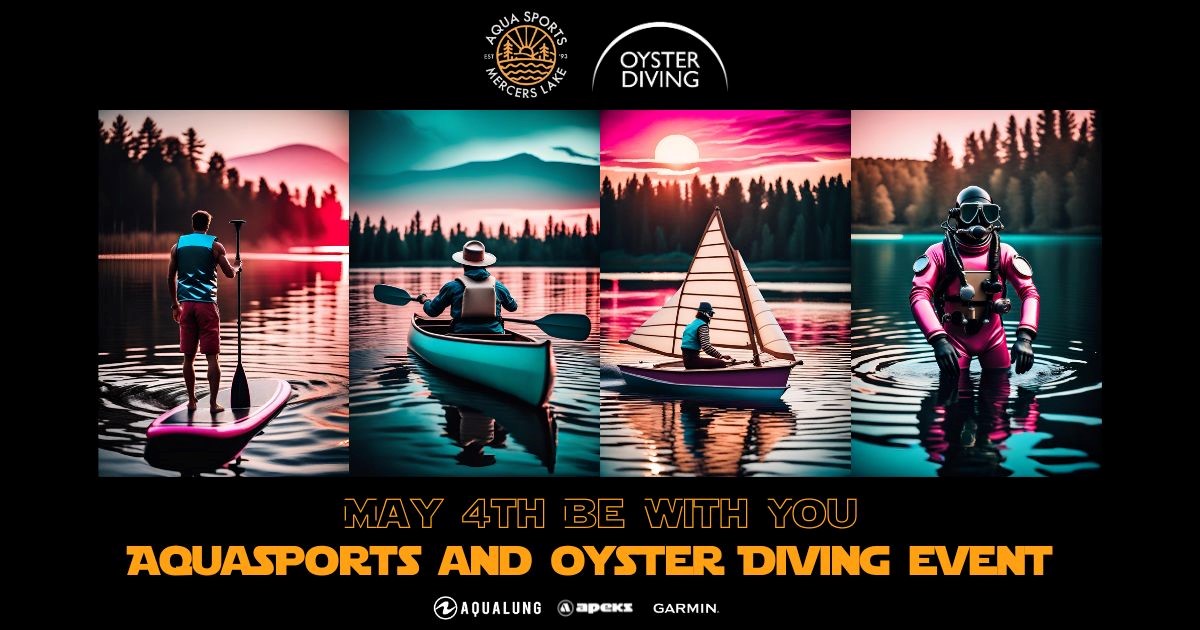
Oyster Diving have recently been given exclusive access to offer scuba diving courses and fun dives at Mercers Lake, a beautiful lake near M25/Gatwick in the UK.
Oyster have just launched their own dive boat ‘The Blue Pear’ to explore various parts of the lake. Divers can glide around the underwater woodland, see lots of fish and decent visibility. Out of the water divers set up in the purpose built kitting up area, unwind in a warm shower, and off-gas in the café & licensed bar.
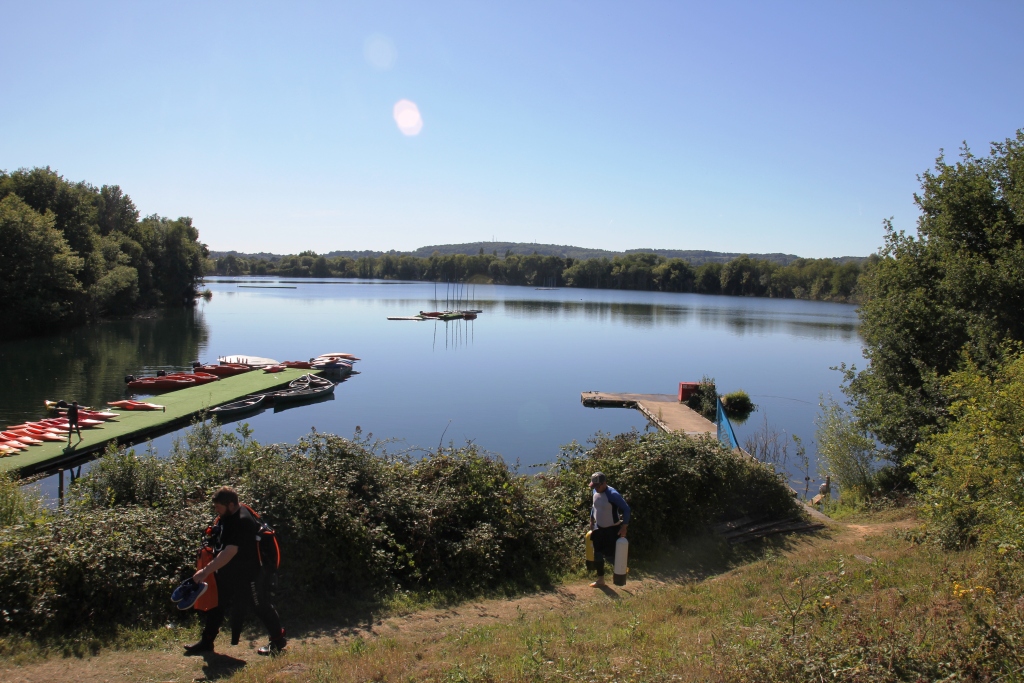
To celebrate the start of the summer season, AquaSports and Oyster Diving have teamed up to host a Star Wars-themed open day on the 4th May.
Guests will be able to enjoy discounted tasters of various watersports including Stand Up Paddleboarding (SUP), Canoeing and Sailing. Oyster Diving will be joined by Apeks and possibly other dive manufacturers to display their latest products. Demo gear will be available for qualified divers and Oyster’s sales support team will be on hand for customers with any questions.
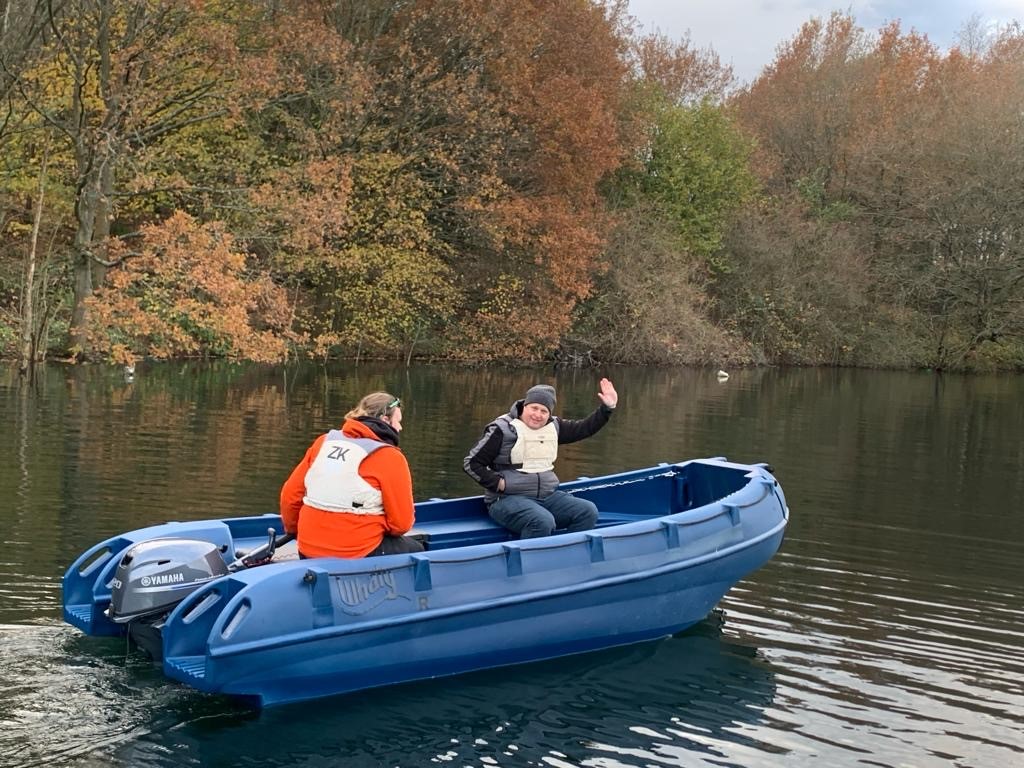
Divers wishing to get in the water will need to book in via Oyster Diving’s website where you can also choose to hire any equipment. Non-divers and well behaved dogs are very welcome!
As well as the watersports there will also be music, food and a licensed bar. The fun starts at 10am and finishes around 4.30pm.
Please come along, wear your finest Stormtrooper or Princess Leia outfit and enjoy the fun!
For more details contact: mark@oysterdiving.com
-

 News2 months ago
News2 months agoHone your underwater photography skills with Alphamarine Photography at Red Sea Diving Safari in March
-

 News2 months ago
News2 months agoCapturing Critters in Lembeh Underwater Photography Workshop 2024: Event Roundup
-

 Marine Life & Conservation Blogs2 months ago
Marine Life & Conservation Blogs2 months agoCreature Feature: Swell Sharks
-

 Blogs1 month ago
Blogs1 month agoMurex Resorts: Passport to Paradise!
-
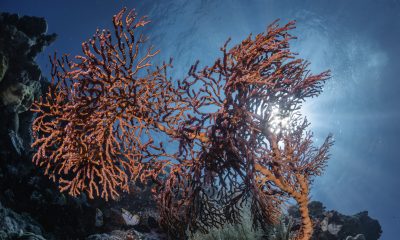
 News3 months ago
News3 months agoDive into Adventure with Photo Pro Paul Duxfield in North Sulawesi this October
-

 Gear News3 months ago
Gear News3 months agoBare X-Mission Drysuit: Ideal for Both Technical and Recreational Divers
-

 Gear Reviews2 months ago
Gear Reviews2 months agoGear Review: Oceanic+ Dive Housing for iPhone
-

 Blogs2 months ago
Blogs2 months agoDiver Discovering Whale Skeletons Beneath Ice Judged World’s Best Underwater Photograph


